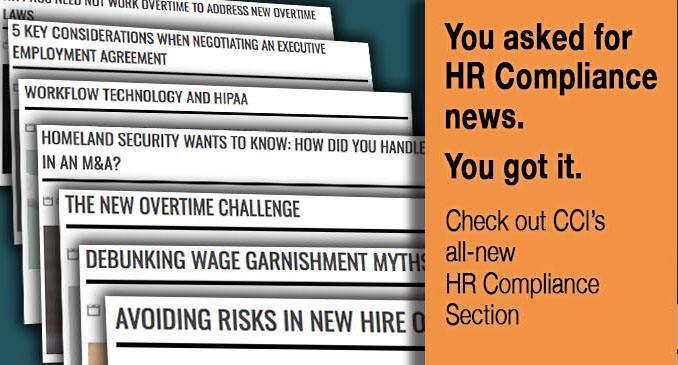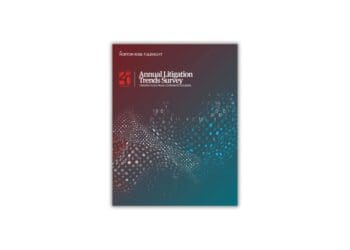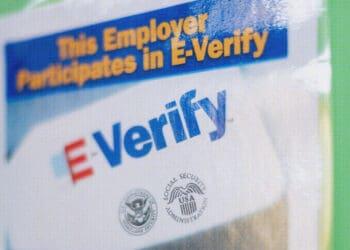CCI responds to reader demand with increased coverage of HR compliance news.
It’s no secret that HR’s function is at the center of your company’s efforts to hire and retain people to execute strategy and achieve goals. But HR’s role as a key player in the company’s compliance structure is less recognized.
Not for long. The laws and regulations that govern the employment relationship are increasingly complex, and it’s up to HR to understand and keep abreast of requirements. Failure to do so means fines, penalties and the potential for reputational harm to the company.
So, on that cheery note — we at Corporate Compliance Insights are delighted to announce a new section of our online publication devoted exclusively to HR compliance articles and resources. We’ve always been committed to bringing you the best in HR compliance coverage – now we’re simply bringing you lots more of it!
We’ve launched the section in response to reader demand, and we’ll be adding new content daily. News and commentary are provided by a growing list of compliance thought leaders and HR experts from around the world.
Be sure to visit the site regularly for the latest trends and tactics on the topics that mean the most to you. To get you started, here’s a sampling of recent posts:
The new overtime rules were meant to simplify the longstanding exempt/nonexempt payroll construct of the Fair Labor Standards Act. But are they simple? Not so much. With the December 1 deadline approaching, U.S. employers are on the clock to comply and successfully balance the sometimes competing interests of profit, people and process.
Debunking Wage Garnishment Myths
As wage garnishments continue to affect employees, employers in many states are becoming increasingly liable to creditors. But many organizations still overlook wage garnishments and view them as an obscure and complex aspect of business. As a result, many myths have developed about how to process them, how to remain compliant when dealing with them and the availability of useful wage garnishment data.
Why Social Media Has Become The New BYOD
Employees are stepping up their interest in using their own personal social media apps, accounts and established networks of contacts to communicate for business purposes, given the immediate reach and traction they provide. Maintaining compliance has just gotten much more difficult, but the good news is that there are key technologies that can help.
Avoiding Risks In New Hire Onboarding
Organizations may face a host of hurdles during the onboarding process, but perhaps none quite as challenging as maintaining compliance with state-specific new hire notification requirements. These mandates are often ambiguous and difficult to track, yet following them to the letter is critical to minimizing risk.
Even though health care organizations have largely transitioned to electronic health record systems, the risks associated with patient information on paper documents remains. Opportunities for patient data to be compromised are present every time a record is touched – whether it’s printed, copied, scanned or faxed. Sound data handling practices are a must to maintain HIPAA compliance.
5 Key Considerations When Negotiating An Executive Employment Agreement
Hiring and retaining capable executives who will drive performance can be a daunting task for any company. It is important to incentivize management employees to meet their goals while also protecting the business from poor performance and incidents of misconduct.














